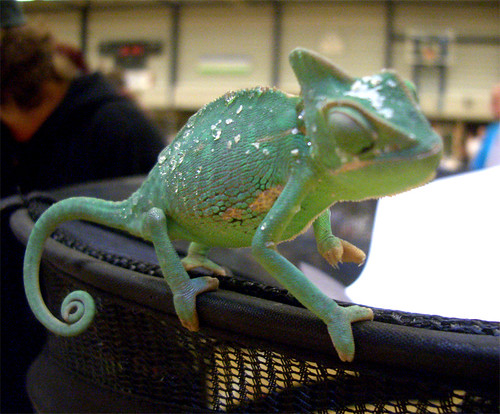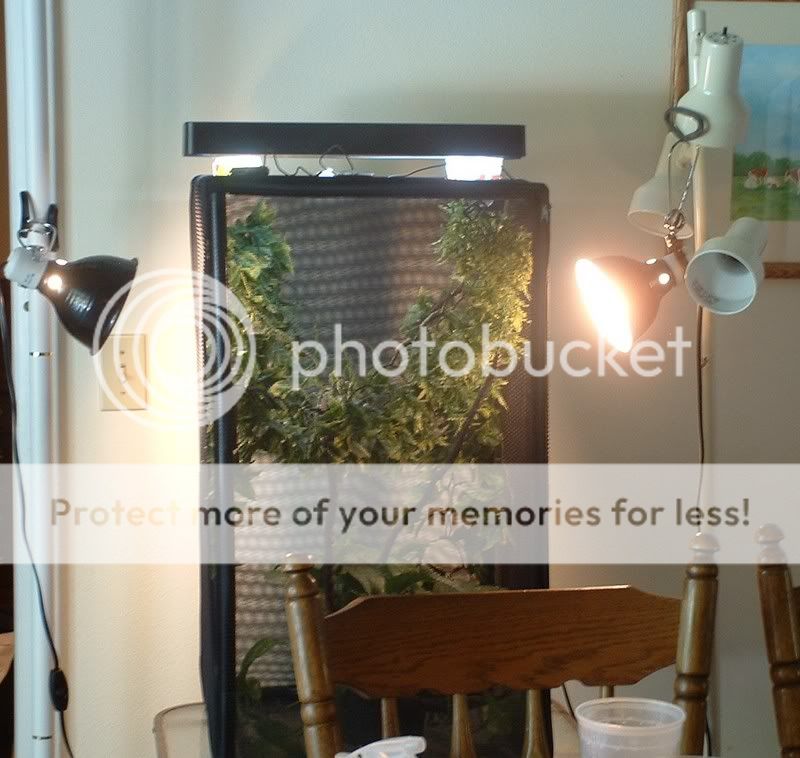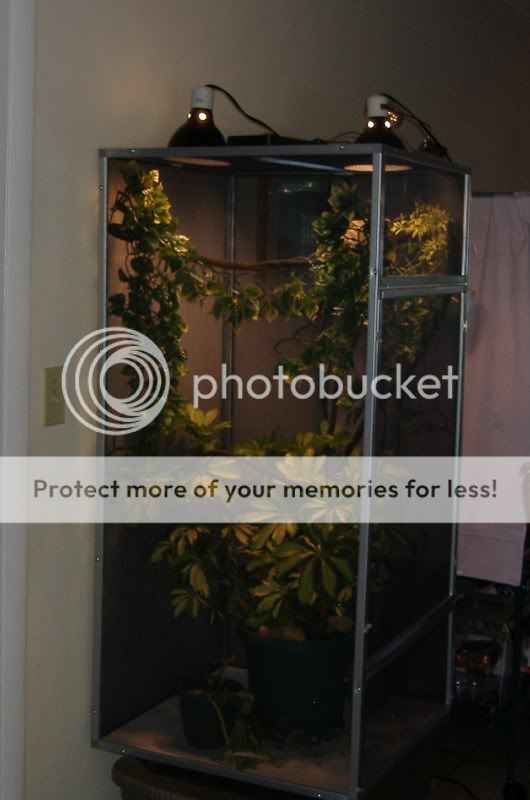Breigh
New Member
Hello all 
I'm new to the forums and came here looking for info on Yemen Chameleons. I'm a Canadian living in the Netherlands and yesterday I went to a reptile expo and saw this little guy:

There were others like him, some very very small. I read up on care sheets and have been trying to learn about them. I would have bought one right then and there but I like to know what I'm getting into first and have an enclosure set up for him before I take him (or her) home.
Some questions I have are:
1) I read on the care sheets that a recommended enclosure is 3x3x4 feet, is this the standard or can it be not as deep but higher etc? I'm basically trying to figure out how I can fit an enclosure for it into my house as I already have quite a few pets and a few large turtle aquariums hehe
2) How messy are they? I read that you should not use substrate with them due to impaction. What should I expect in terms of waste / general mess? Do they smell?
3) How fast do they grow?
4) What kind of general temperment do they have? Do they bite? I know most reptiles don't like to be handled and I'm ok with that but when I do need to handle him/her is there anything I need to know?
5) Are they bothered by drafts? I live in a 3rd floor flat and during the nice weather we keep the windows open and get a nice breeze through the front and back windows. Are they very delicate or prone to respiratory problems? Is it ok as long as it's warm?
6) Can you not use ANY glass? I read on some of the care sheets that they really really hate glass but when I look at people's enclosures I see many WITH glass, I'm confused!
Basically I need to know everything hehe
I would also LOVE to see some photos of enclosures people here have for this type of chameleon (or enclosures for other species that would also work for this one) so I can get an idea of what I should do.
Thanks for the advice!!
I'm new to the forums and came here looking for info on Yemen Chameleons. I'm a Canadian living in the Netherlands and yesterday I went to a reptile expo and saw this little guy:

There were others like him, some very very small. I read up on care sheets and have been trying to learn about them. I would have bought one right then and there but I like to know what I'm getting into first and have an enclosure set up for him before I take him (or her) home.
Some questions I have are:
1) I read on the care sheets that a recommended enclosure is 3x3x4 feet, is this the standard or can it be not as deep but higher etc? I'm basically trying to figure out how I can fit an enclosure for it into my house as I already have quite a few pets and a few large turtle aquariums hehe
2) How messy are they? I read that you should not use substrate with them due to impaction. What should I expect in terms of waste / general mess? Do they smell?
3) How fast do they grow?
4) What kind of general temperment do they have? Do they bite? I know most reptiles don't like to be handled and I'm ok with that but when I do need to handle him/her is there anything I need to know?
5) Are they bothered by drafts? I live in a 3rd floor flat and during the nice weather we keep the windows open and get a nice breeze through the front and back windows. Are they very delicate or prone to respiratory problems? Is it ok as long as it's warm?
6) Can you not use ANY glass? I read on some of the care sheets that they really really hate glass but when I look at people's enclosures I see many WITH glass, I'm confused!
Basically I need to know everything hehe
I would also LOVE to see some photos of enclosures people here have for this type of chameleon (or enclosures for other species that would also work for this one) so I can get an idea of what I should do.
Thanks for the advice!!
Last edited:






